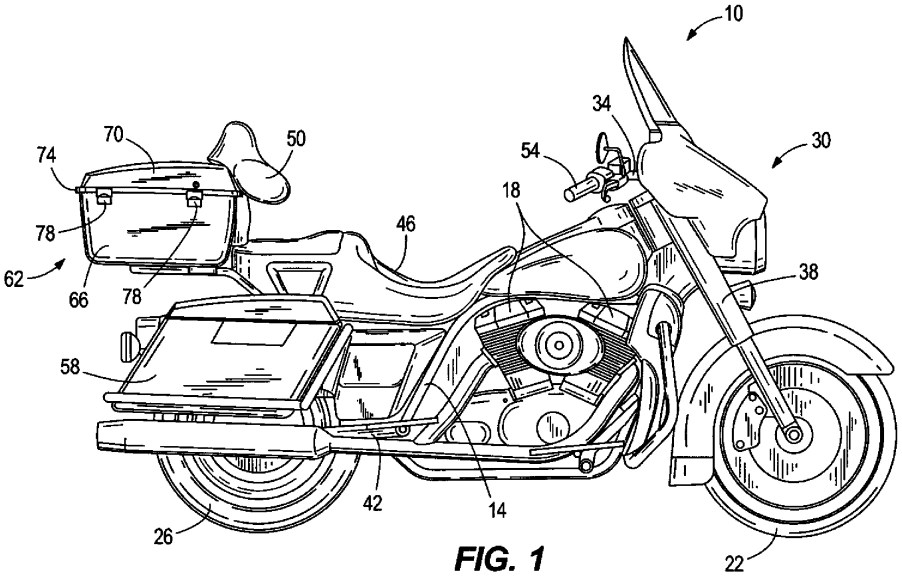
Is Harley-Davidson Working on a Self-Balancing Motorcycle?
Most recommended beginner bikes are fairly small so newer riders aren’t intimidated at balancing on and handling them. That’s in contrast to some of Harley-Davidson’s bikes. Even its cheapest bike, the Street 750, is about 100 pounds heavier than my Triumph Street Triple R. But Harley may have a solution that could attract new customers and help its aging fanbase: a self-balancing motorcycle.
Harley-Davidson’s self-balancing motorcycle patent
The news comes courtesy of a patent application Harley-Davidson recently submitted, Cycle World reports. As of this writing, Harley-Davidson has not officially commented on the patent. So, it’s tough to say exactly how far-along this self-balancing motorcycle concept is. However, the technology behind it is well-understood.
The self-balancing motorcycle patent is based around a gyroscope, Autoblog reports. Gyroscopes are already found in modern sportbikes to send directional data into stability control systems. They’re also used in some navigation devices, such as the Beeline Moto, for similar reasons. However, Harley-Davidson’s gyroscope-based system differs from these in a few ways.
Firstly, instead of a tiny electro-mechanical design, Harley-Davidson’s gyroscope is of the traditional spinning-mass variety. Like the kind found in museum gift shops.

An electric motor spins a flywheel at 10,000-20,000 RPM; both are mounted in a gimbal, a kind of pivoting ring/cage. At speeds above 3 mph, the gimbal freely moves around, so it doesn’t interfere with the motorcycle’s handling. But below that, the gimbal engages with a computer-controlled actuator linking to the chassis, Hagerty explains.
The gyroscope creates a force that lets it stay upright, which the computer would use to tilt the bike. To prevent overcompensation, Harley-Davidson’s self-balancing motorcycle would also rely on several tip and lean sensors.

However, arguably the biggest difference is the system’s scale. True, the gyroscope isn’t exactly computer-chip-sized. But the whole package is small enough to fit in a touring bike’s top luggage case. It’s also removable, Jalopnik reports, and can reportedly be retrofitted to older Harley-Davidson models.
Would this help the brand?

In a way, Harley-Davidson already has a self-balancing motorcycle. Kind of. The company has offered 3-wheeled trikes for many years, even before Can-Am’s trikes came along. I’ve spoken with several veteran Harley riders in the past who report trikes are a boon to those worried about tipping over. Especially lighter female riders.
However, the trike isn’t a perfect solution. For one, they’re expensive: even the cheapest Harley-Davidson trike, the Freewheeler, starts at $27,999. Secondly, they’re even heavier than normal bikes. The Freewheeler weighs 1,118 pounds. Even if tipping-over isn’t a problem, that much weight creates handling issues, especially with 2 wheels in the back. Like a sidecar-equipped bike, it’s less a motorcycle than a car.

In contrast, the Yamaha Niken GT has its extra wheel in the front, like the Morgan 3-Wheeler. It’s still kind of a ‘self-balancing motorcycle.’ But it weighs about half as much, Cycle World reports and costs less ($17,299). And it still handles like a motorcycle, just with more traction.
Having a bolt-on, compact system that could provide Harley-Davidson’s motorcycles with self-balancing capabilities is a better solution than a trike. And not just because of size and cost. Jalopnik and Cycle World muse that the system could work like a bicycle’s training wheels. New riders would build up confidence in handling their bikes, then take it off. And older riders could still enjoy their motorcycles even if their legs aren’t as strong as they used to be.
Other brands with self-balancing motorcycle projects
Harley-Davidson isn’t alone in trying to create a self-balancing motorcycle. Honda has also taken a crack at it.
Honda’s ‘Riding Assist Technology’ also functions below 3 mph, Cycle World reports. But the Japanese company’s self-balancing motorcycle doesn’t rely on gyroscopes. Instead, it uses electric motors to pivot the front forks and make minor steering adjustments, Road & Track explains. Low-speed maneuvers are still doable because the steering functions in steer-by-wire mode below 3 mph. Above that, the motors re-engage the forks and handlebars.

The system is allegedly lighter than a gyroscope-based one, Wired reports, and is based on tech found in Honda’s Asimo robot and Uni-Cub electric mobility scooter. However, as of this writing, it has yet to appear on any production Honda motorcycle.
Harley-Davidson’s self-balancing motorcycle patent seems simpler and easier-to-implement than Honda’s design. Whether that means it’ll go into production remains unknown. But it is a welcome sign that the American brand is trying to innovate.
Follow more updates from MotorBiscuit on our Facebook page.


